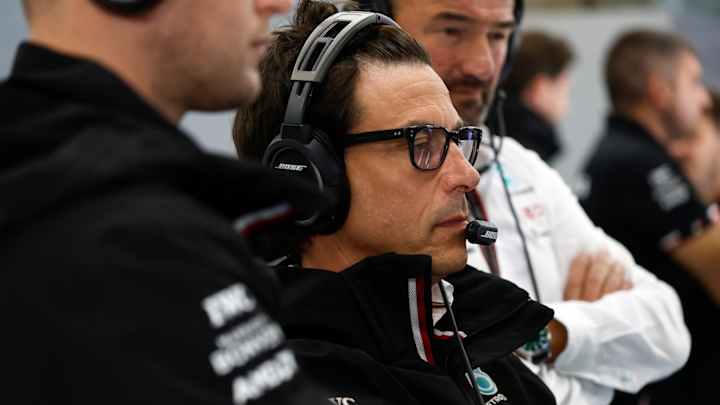F1 News: Toto Wolff Reveals Simulator Issue As Measurements Don't Match Track Performance

Mercedes team principal Toto Wolff admitted that the team is facing a simulator correlation issue, as their measurements are not translating to actual performance on the racetrack. This revelation came after the disappointing Saudi Arabian Grand Prix, where both George Russell and Lewis Hamilton struggled.
Key Takeaways:
- Toto Wolff revealed a simulator issue at Mercedes
- Measurements from simulations don't match track performance
- Mercedes struggled for pace in Saudi Arabia after a promising Bahrain

The 2024 Formula 1 season has been a rollercoaster ride for Mercedes so far. While their performance in Bahrain hinted at a level of pace close to what the team were expecting, the Saudi Arabian Grand Prix served as a harsh reality check for the Brackley squad. Despite their best efforts, the W15 car seemed to underperform, particularly in high-speed corners, leaving both George Russell and Lewis Hamilton trailing behind their midfield rivals.
In the aftermath of the race, Toto Wolff candidly addressed the team's struggles, shedding light on a persistent issue that has plagued Mercedes since the 2022 season – a discrepancy between simulator measurements and actual track performance.
"It's just the high-speed variant where we are losing the lap time," Wolff told Sky Sports F1. "There is only so much you can tune here. Our simulations point us in a direction, and this is the kind of set-up range that we then choose."
Wolff further elaborated:
"You put the rear wing on, and I think you gain a few tenths or not if you get the set-up right or wrong. But there's not a massive corridor of performance.
"It's a more fundamental thing that we believe the speed should be there. And we measure the downforce, but we don't find it on the lap time."
This admission highlights a persistent challenge faced by the Mercedes technical team, led by James Allison. Despite their efforts to correlate simulator data with real-world performance, the gap between simulations and the racetrack persists, hindering their ability to fully optimise the car's setup.
"It's a more fundamental thing that we believe the speed should be there. And we measure the downforce, but we don't find it on the lap time."
The struggles in Saudi Arabia were further compounded by the impressive pace displayed by Mercedes' customer teams, McLaren and Aston Martin. Russell found himself unable to pass Fernando Alonso, despite the Aston Martin being a draggy car, and the McLaren of Lando Norris turned out to be a roadblock for Lewis Hamilton, despite the Brit's car being the slowest on the grid in terms of high speed.
